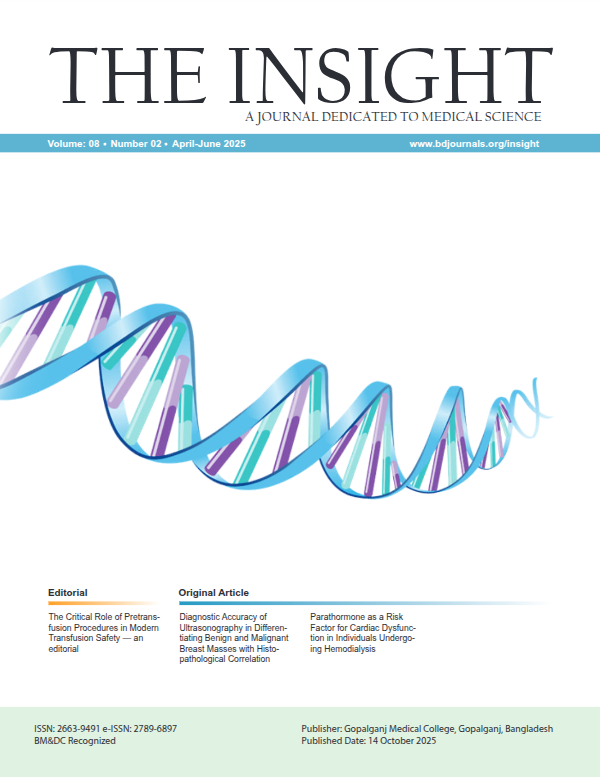Abstract
Background: Spondylolisthesis, a condition characterized by the slippage of one vertebral body over another, significantly impacts patient quality of life and poses challenges in spinal surgery. This study aimed to evaluate the efficacy and reliability of posterior decompression and transforaminal lumbar interbody fusion (TLIF) using both cage and bone graft in patients with spondylolisthesis. Methods & Materials: In this prospective observational study, 15 patients with spondylolisthesis underwent posterior decompression and TLIF at NITOR, Dhaka, Bangladesh, from January 2020 to December 2021. Key parameters assessed included slip angle, percentage of slip, mean disc space height, pain levels (using the Visual Analog Scale), motor function, fusion rate, and functional outcomes. Data were analyzed pre-operatively, at 6 months, and 1 year post-surgery. Results: Significant improvements were observed post-surgery. The mean slip angle reduced from 15.2 ± 1.32° to 7.73 ± 1.03°, and the percentage of slip decreased from 27.37 ± 1.87% to 12.79 ± 0.96% (p<0.05). Mean disc space height increased from 7.33 ± 1.05 mm to 11.1 ± 1.77 mm. VAS scores for back and leg pain showed significant reductions. Motor deficits improved, with 93.33% of patients showing no deficits at the 6-month follow-up. The fusion rate was 86.67%, and 73.33% of patients reported 'Excellent' functional outcomes based on Macnab criteria. Conclusion: The study demonstrates that posterior decompression and TLIF using cage and bone graft are effective in treating spondylolisthesis, significantly improving spinal alignment, reducing pain, enhancing motor function, and achieving high fusion rates. These findings suggest that this surgical approach can substantially improve the quality of life for patients with spondylolisthesis.

This work is licensed under a Creative Commons Attribution 4.0 International License.
Copyright (c) 2025 The Insight





 PDF
PDF